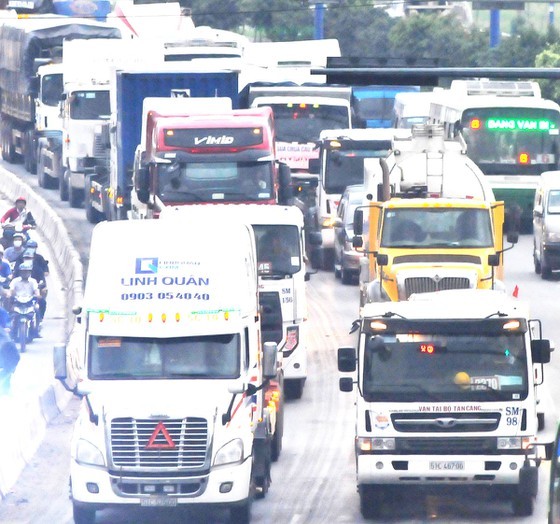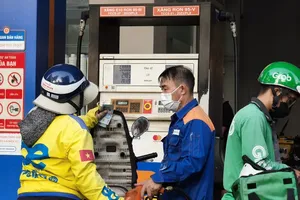
Establishing a transport trading floor is a good idea. And authorities had expected that this idea would attract the participation of both shippers and vehicle owners. However, so far, most of the transport exchanges through the websites and the apps have not been successful, the number of users is quite small. Many transport trading floors even have stopped working.
VinaTrucking, Vietnam’s first transport trading floor, officially operating from December 2015, was expected to help shippers to save 30 percent of shipping costs and help transporters to increase at least 30-50 percent of revenues and reduce waste because up to nearly 50 percent of trucks were empty due to a shortage of goods. However, according to the reporter’s finding, over the past time, on the VinaTrucking exchange, there were only 23 vehicle codes registered to search for freight.
Of which, the four codes CX-1274, CX-1275, CX-1276, and CX-1277 register for container trucks from Binh Duong Province to Phu Quoc Island from January 31, 2018, to October 28, 2020. Some other vehicle codes registered to go from Hai An District in Hai Phong City to Viet Tri City in Phu Tho Province from October 31, 2016, to October 30, 2020. Meanwhile, the list of consignments to be transported is blank. This shows that there are vehicles registering but the source of freight is not available, meaning that the floor has not made any transactions for the vehicle owners yet.
At the same time, at the sanvanchuyen.vn transport trading floor, the statistics posted on the website on February 18, 2019, were 805 registered transport companies; the number of transactions was 202; the amount of money traded via floor was VND505 million. However, currently, the website of this floor is sometimes accessible, sometimes inaccessible.
According to Mr. Tran Anh Tuan, the owner of a transport company with 158 trucks and container trucks specializing in transporting fruits from the South to Northern provinces, there are many delicate issues that he feels uncomfortable to talk about, but the bottom line is that transport trading floors have not met the needs of transporters.
Mr. Tran Thanh Tai, director of a transport company in Ho Chi Minh City, said that after participating on the floor for a while, he saw that the limitation of the transport trading floor is the lack of prestigious and big transport enterprises. Information that enterprises put on the floor cannot be controlled. Freights are often of high value, if losses occur, who will be responsible for them?
According to Mr. Bui Van Quan, Chairman of the Ho Chi Minh City Goods Transport Association, many members of the association have participated in the transport floor. However, many customers trading on the floor offered unreasonable prices. Moreover, payment procedures were cumbersome, so many enterprises did not trade on the floor anymore. And yet, most of the exchanges were established by some private companies with the main purpose of providing services on commission. These companies "avoid" all the issues related to legality and the transaction procedures between shippers and transporters. So, if there is a risk, who will take responsibility for it?
With the opinions of the transport businesses, Mr. Ta Cong Thuan, General Director of Vinatrucking Transport Trading Floor, said that in the first one or two years, on average, the floor had 300-400 visits, received and handled dozens of orders every day. However, after having had the contacts of each other, shippers and transporters made the agreements by themselves, not through the floor anymore. This is an economic transaction, the two sides agree on their own without any binding mechanism, nor sanctions so the floor cannot do anything.
‘For the exchange to operate effectively, it is necessary to establish a logistics chain. With only a trading floor playing as an intermediary, it is not feasible,’ said Mr. Thuan. When being asked whether the operations of the transport trading floor will continue to be maintained, he answered that they were also considering that.
Objectively, many transport experts said that the State needs to provide more support mechanisms, such as propaganda, building a legal corridor for the floor to operate. In the past time, most of the transactions between shippers and transporters were done in the old way, which is connected stably and has certain benefits to each other. Therefore, changing the method and putting these transactions on the floor is not easy, it takes time and the support of management tools for enterprises to get used to the new method, creating motivation in the initial time.
























